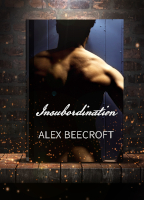Write On – More about structure
Last week, I started to talk about the structure of stories. At its most basic level it’s true to say that a story has a beginning, a middle and an end. But there are other things that you might want to think about before you start to make a plan for how to write your story – refinements and additions to that basic structure which make it a bit more fine-tuned.
If you crack open almost any writing book on the subject of structure, you’ll come across more tables and graphs than – if you’re anything like me – you know what to do with. I do much better with words than pictures (it’s why I’m a writer and not an artist), so the graphs don’t convey a lot to me. But I can summarise what I’ve learned from these books so far:
Beginning.
In the old days, the beginning used to be quite a leisurely process. In fact, I have some writing software which suggests that every novel should start with the character in his ‘ordinary world’. We should see what our main character is like, when he’s in the setting where he has been up until the story started. We should get to know the character in the place where he is at home, before anything out of the ordinary happens to make things take a turn for the unusual.
You don’t have to look far to see examples of this. The Lord of the Rings opens with Frodo at home in the Shire, doing fairly normal things with fairly normal people. The Hobbit opens with Bilbo at home in the Shire, being determinedly ordinary, until Gandalf provides an inciting incident of some dwarves at the door.
In the old days, it used to be standard to introduce the MC by watching him grow up, so you got all the backstory as well as the current ‘Ordinary World’ setting.
The idea of this was that you would get to know what your MC was like on a normal day to day basis before something comes along and throws him into a story. The structure went a bit like this:
Ordinary World > Inciting incident > hero rejects the quest > hero accepts the quest > main story starts.
I’ve never been quite sure why it was important for the hero to reject the quest to start off with, but that’s what the epic journey people usually say ought to happen. These days, however, we’ve all become much more impatient with our stories and we’re no longer interested in watching your MC get up and have breakfast, brush his hair and feed the dog. Not, at least, unless he’s feeding the dog in small bite sized chunks to his unsuspecting room-mate.
Modern readers tend to want to skip the ‘ordinary world’ part and go straight to the ‘inciting incident’ – the thing that happens that sets the MC off on a story.
Modern readers want to know, often in the first paragraph, that some epic shit is going down (or at least that something intriguing is happening right now.) This is what editors and agents mean by ‘a hook’ in the first paragraph. Something needs to be happening at once to grab the reader’s attention and make them want to read on.
I didn’t want to believe this, but after several weeks of reading indie fiction in which nothing does happen in the first few chapters I discovered that it doesn’t matter how brilliant your later chapters are if your reader is so bored by your earlier ones that they put the book down two chapters in and never pick it up again. If I read like this myself, I can’t blame others for doing the same, I must just accommodate them and start being interesting earlier.
This doesn’t mean you can’t have backstory any more, but it does mean that backstory will have to be threaded into the story while the story is going on, and is no longer allowed to take up chapters on its own.
So, the beginning has become quite minimal. We’ve jumped straight to the thing that happens to start the story. Our character has been shoved out of an aeroplane without a parachute, or he’s noticed that his room-mate is sporting a nice new pair of tentacles this morning, or he’s received a letter from the bank telling him he’s being thrown out on the street, or he’s knocked down a cyclist and fallen in love with them on the spot. We have hit the ground, hit the story and we’re running.
Middle:
But because our beginning is shorter – it takes less time to get the story up and running – our middle is longer. Suddenly the middle has to advance the story and let us get to know the character and include any absolutely necessary backstory. And it has to do this while resisting the tendency all authors know about – the tendency to get a little saggy and bloated around the middle.
There are a couple of things I’ve found in story structure books which suggest ways of tackling the long slog of the middle of a book without allowing it to be too much of a slog. One suggestion is that there should be a point in the middle of the middle – at the mid point of the book – where the story changes focus.
Perhaps our character has been seeking revenge up til now. Perhaps his housemate failed to water his special plant, and in return he fed the dog to the man, and has been systematically alienating all his housemate’s friends and trying to convince the housemate that he’s insane. As we’ve said before, this will be expressed as a problem (how to get revenge on his hm) to which he has tried several solutions, none of which have entirely worked. How about, at the mid point, one of these attempts fails so disastrously (not only does HM fail to believe he’s mad, he actually buys MC a new plant!) that MC is forced to realise that his goals until now have not been entirely a good idea.
Now the book has changed direction and the problems he faces are new ones (how can he get the friends back? Can he persuade that interesting fellow in the castle, Victor something, to reanimate the dog from the bits he has left? Our character is still driven by his reaction to the relationship with his housemate and the houseplant, but now he’s trying to mend the things he broke in the first half.
This gives you a nice opportunity to do something fresh and surprising in the second half.
Another thing to bear in mind with the middle is that the second half ought to be higher octane than the first. Yes, you start with something immediately interesting, and you carry on with interesting things, but the stakes ought to be getting higher and the tension building up as you go along. Nobody wants to read a story that gets less gripping as you go along, and a story that stays at the same level of peril and anxiety all the way through is rightly called flat.
So, when you’re structuring your novel, make sure things build up to a climax. And not an unrelated climax. It’s no good to suddenly have MC and his housemate come together because they’re threatened by random aliens. (Though you might get away with it if they were vegetable-aliens and the strange plant HM killed was actually an alien child.) The point is that the climax has to build naturally from everything that’s gone before.
To put it in a shortened form. Your middle can go something like this:
MC first attempt to solve problem, fails. MC does something even more serious in an attempt to get revenge, but that doesn’t work either. MC does something really bad, and HM responds with unexpected generosity (Mid point). MC changes his mind about his goals, but now his previous actions are having dire consequences which he must combat. He tries, but things get worse. He does some epic shit, but it only makes things harder. He tries something batshit insane. Crisis!
The crisis is the point where your middle turns into your end. For example, in The Hobbit, there’s a mid point shift where Thorin turns from being ‘relatively reliable companion’ to ‘gold and power crazed idiot,’ and is now acting as antagonist. Everything has escalated from uncomfortable behaviour at the dinner table to ALL OUT WAR.
When you have all out war, there’s not much further you can go in terms of racking up the stakes and the tension, so now it’s time for the story to resolve itself.
Ending
Once you have a crisis, there are generally only two ways the story can go. The characters fail, or they succeed. MC and HM fail to rescue Victor from the mob and the dog remains dead, leading them to be permanently estranged. The elves kill the dwarves and then are killed themselves by the goblin army, and the kingdom is never restored.
This kind of tragic ending will gain you much kudos from literary reviewers who think it’s an unflinching look at the realities of life. I generally find them terribly depressing – and every bit as made up as the happy ending, but if that’s the way you want to take it, it’s your story. Do what you like with it 🙂
Or, your characters can succeed – the dog is reconstituted, the household is saved. The battle is won and the kingdom is left to prosper.
But ending the crisis is not quite enough. There must also be a resolution to all the other plot threads you may have going, and there must be a sense of closure.
It’s unsatisfying just to finish with the end of the big battle. We want to see how the world and our characters have been changed by the ordeal they’ve just been through. The heroes need to come home and apply the things they’ve learned to the task of making the world a better place, otherwise what was the point?
So the ending is where the characters come home (or decide not to come home, but find somewhere new to belong.) Plot threads are tied up, and all the unanswered questions you’ve raised finally get an answer.
Ends don’t seem to have undergone the shrinkage that beginnings have, but that’s probably because they’ve always been short. To go back to The Lord of the Rings, there’s nothing worse than the situation in the Return of the King film, where the ending just kept not being over. Everything would be said that needed to be said, there’d be some cathartic weeping and a sense of home coming, wrapping everything up, and then a fade to black and everyone would sigh with satisfaction. And then, fuck me, they’d wind it all up again and do it a second time, and a third, until by the end my feeling of satisfaction had turned into a wish to just get on with it already.
Endings – wrap everything up once. Then finish.
~
Next time – strangers from the subconscious. Still in ‘stuff to do before you even start’ mode, we’re on to creating our starter set of characters.

